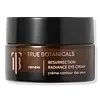What's inside
What's inside
 Key Ingredients
Key Ingredients

 Benefits
Benefits

 Concerns
Concerns

 Ingredients Side-by-side
Ingredients Side-by-side

Water
Skin ConditioningGlycerin
HumectantSqualane
EmollientPropanediol
SolventButylene Glycol
HumectantButyrospermum Parkii Butter
Skin ConditioningPentylene Glycol
Skin ConditioningNiacinamide
SmoothingDimethicone
EmollientPolymethylsilsesquioxane
Polysorbate 20
EmulsifyingAcetyl Dipeptide-1 Cetyl Ester
Skin ConditioningToluene Sulfonic Acid
Ammonium Polyacryloyldimethyl Taurate
Emulsion StabilisingDimethiconol
EmollientDisodium EDTA
Citric Acid
BufferingAluminum Starch Octenylsuccinate
AbsorbentGlyceryl Acrylate/Acrylic Acid Copolymer
HumectantWater, Glycerin, Squalane, Propanediol, Butylene Glycol, Butyrospermum Parkii Butter, Pentylene Glycol, Niacinamide, Dimethicone, Polymethylsilsesquioxane, Polysorbate 20, Acetyl Dipeptide-1 Cetyl Ester, Toluene Sulfonic Acid, Ammonium Polyacryloyldimethyl Taurate, Dimethiconol, Disodium EDTA, Citric Acid, Aluminum Starch Octenylsuccinate, Glyceryl Acrylate/Acrylic Acid Copolymer
Camellia Sinensis Leaf Extract
AntimicrobialMangifera Indica Seed Butter
Skin ConditioningGlycerin
HumectantHydrogenated Vegetable Oil
EmollientSilybum Marianum Ethyl Ester
Skin ConditioningCetearyl Olivate
Coffea Arabica Seed Oil
MaskingSorbitan Olivate
EmulsifyingSelaginella Lepidophylla Extract
EmollientTerminalia Arjuna Extract
Skin ConditioningSodium Hyaluronate
HumectantCoffea Arabica Seed Extract
MaskingGlycyrrhiza Glabra Root Extract
BleachingHippophae Rhamnoides Oil
EmollientRosa Rubiginosa Seed Oil
EmollientSimmondsia Chinensis Seed Oil
EmollientPersea Gratissima Oil
Skin ConditioningLactobacillus Ferment
Skin ConditioningCaprylic/Capric Triglyceride
MaskingOleic Acid
EmollientPopulus Tremuloides Bark Extract
AntiseborrhoeicCitric Acid
BufferingSodium Phytate
Tocopherol
AntioxidantSclerotium Gum
Emulsion StabilisingLecithin
EmollientPhenethyl Alcohol
MaskingEthylhexylglycerin
Skin ConditioningCamellia Sinensis Leaf Extract, Mangifera Indica Seed Butter, Glycerin, Hydrogenated Vegetable Oil, Silybum Marianum Ethyl Ester, Cetearyl Olivate, Coffea Arabica Seed Oil, Sorbitan Olivate, Selaginella Lepidophylla Extract, Terminalia Arjuna Extract, Sodium Hyaluronate, Coffea Arabica Seed Extract, Glycyrrhiza Glabra Root Extract, Hippophae Rhamnoides Oil, Rosa Rubiginosa Seed Oil, Simmondsia Chinensis Seed Oil, Persea Gratissima Oil, Lactobacillus Ferment, Caprylic/Capric Triglyceride, Oleic Acid, Populus Tremuloides Bark Extract, Citric Acid, Sodium Phytate, Tocopherol, Sclerotium Gum, Lecithin, Phenethyl Alcohol, Ethylhexylglycerin
Ingredients Explained
These ingredients are found in both products.
Ingredients higher up in an ingredient list are typically present in a larger amount.
Citric Acid is an alpha hydroxy acid (AHA) naturally found in citrus fruits like oranges, lemons, and limes.
Like other AHAs, citric acid can exfoliate skin by breaking down the bonds that hold dead skin cells together. This helps reveal smoother and brighter skin underneath.
However, this exfoliating effect only happens at high concentrations (20%) which can be hard to find in cosmetic products.
Due to this, citric acid is usually included in small amounts as a pH adjuster. This helps keep products slightly more acidic and compatible with skin's natural pH.
In skincare formulas, citric acid can:
While it can provide some skin benefits, research shows lactic acid and glycolic acid are generally more effective and less irritating exfoliants.
Most citric acid used in skincare today is made by fermenting sugars (usually from molasses). This synthetic version is identical to the natural citrus form but easier to stabilize and use in formulations.
Read more about some other popular AHA's here:
Learn more about Citric AcidGlycerin is already naturally found in your skin. It helps moisturize and protect your skin.
A study from 2016 found glycerin to be more effective as a humectant than AHAs and hyaluronic acid.
As a humectant, it helps the skin stay hydrated by pulling moisture to your skin. The low molecular weight of glycerin allows it to pull moisture into the deeper layers of your skin.
Hydrated skin improves your skin barrier; Your skin barrier helps protect against irritants and bacteria.
Glycerin has also been found to have antimicrobial and antiviral properties. Due to these properties, glycerin is often used in wound and burn treatments.
In cosmetics, glycerin is usually derived from plants such as soybean or palm. However, it can also be sourced from animals, such as tallow or animal fat.
This ingredient is organic, colorless, odorless, and non-toxic.
Glycerin is the name for this ingredient in American English. British English uses Glycerol/Glycerine.
Learn more about Glycerin